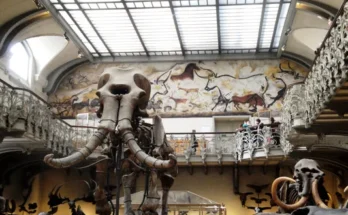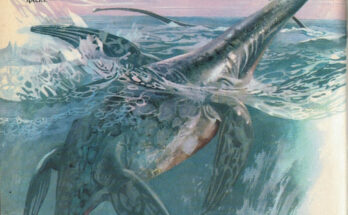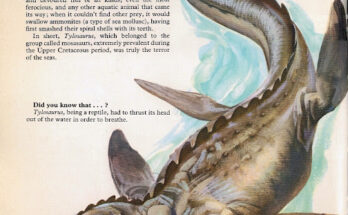Dimetrodon: A Comprehensive Tutorial on a Prehistoric Predator

Introduction
Dimetrodon, a prominent figure from the Permian period of the Middle Ages, is one of the most iconic prehistoric creatures known to paleontology. This tutorial provides an in-depth exploration of Dimetrodon, focusing on its unique anatomy, lifestyle, and evolutionary significance. Aided by detailed illustrations and historical context, this guide is designed for students, educators, and enthusiasts eager to delve into the world of early synapsids and their role in the evolutionary lineage leading to mammals.
Overview of Dimetrodon
Dimetrodon roamed the Earth approximately 295 to 272 million years ago, predating the dinosaurs. The image showcases this formidable predator, characterized by its distinctive sail-like structure on its back, formed by elongated neural spines. This sail, supported by a fan of bones, likely served multiple purposes, including thermoregulation and display. Standing up to 3 meters (10 feet) in length and weighing around 200-300 kilograms (440-660 pounds), Dimetrodon was a dominant carnivore of its time.
Anatomical Features
- Sail Structure: The most striking feature of Dimetrodon is its sail, which could have been used to absorb heat from the sun, aiding in thermoregulation, or as a display for mating and territorial disputes. The image highlights this sail prominently, illustrating its impressive size relative to the body.
- Jaws and Teeth: Dimetrodon possessed powerful jaws with two distinct sizes of teeth—larger canines and smaller incisors—suggesting a specialized diet. This dental arrangement, unlike that of modern reptiles, indicates its classification as a synapsid, a group more closely related to mammals.
- Limbs and Posture: With a sprawling gait supported by sturdy limbs, Dimetrodon moved with a mix of agility and power, as depicted in the image. This posture reflects its adaptation to a terrestrial predatory lifestyle.
Lifestyle and Behavior
As a top predator, Dimetrodon likely hunted a variety of prey, including early reptiles and amphibians. The “Did You Know?” section in the image notes an interesting fact: if Dimetrodon broke a tooth in combat, the tooth would quickly grow back, a testament to its resilience. This regenerative ability would have been advantageous in frequent fights, ensuring its survival as a dominant hunter. The image’s depiction of its menacing jaws and claws reinforces its reputation as a ferocious carnivore.
Evolutionary Significance
Dimetrodon is a key species in understanding the evolution of synapsids, the group that eventually gave rise to mammals. Unlike dinosaurs, which are archosaurs, Dimetrodon belongs to the synapsid lineage, sharing a common ancestor with mammals. Its unique sail and dental structure provide valuable insights into the adaptations that facilitated the transition from reptilian to mammalian traits over millions of years.
Educational Applications
This tutorial is an excellent resource for teaching evolutionary biology and paleontology. Educators can use the image to illustrate the concept of thermoregulation, the diversity of prehistoric life, and the evolutionary link between synapsids and mammals. Students can analyze the sail’s function and compare Dimetrodon’s anatomy with that of modern mammals to explore evolutionary trends. The detailed visual aid enhances hands-on learning and encourages further research into Permian ecosystems.
Scientific Context
Fossil evidence of Dimetrodon has been primarily discovered in what is now North America and Europe, with well-preserved skeletons revealing its robust build and sail structure. Paleontologists continue to study these fossils to unravel the ecological dynamics of the Permian period, a time of significant biodiversity before the mass extinction event that paved the way for the rise of dinosaurs.
Conclusion
Dimetrodon stands as a remarkable example of prehistoric life, bridging the gap between early reptiles and mammals. This tutorial offers a thorough examination of its anatomy, behavior, and evolutionary role, supported by the vivid illustration provided. We invite readers to explore additional resources on synapsid evolution and the fascinating world of Permian fauna to deepen their understanding of Earth’s ancient history.



